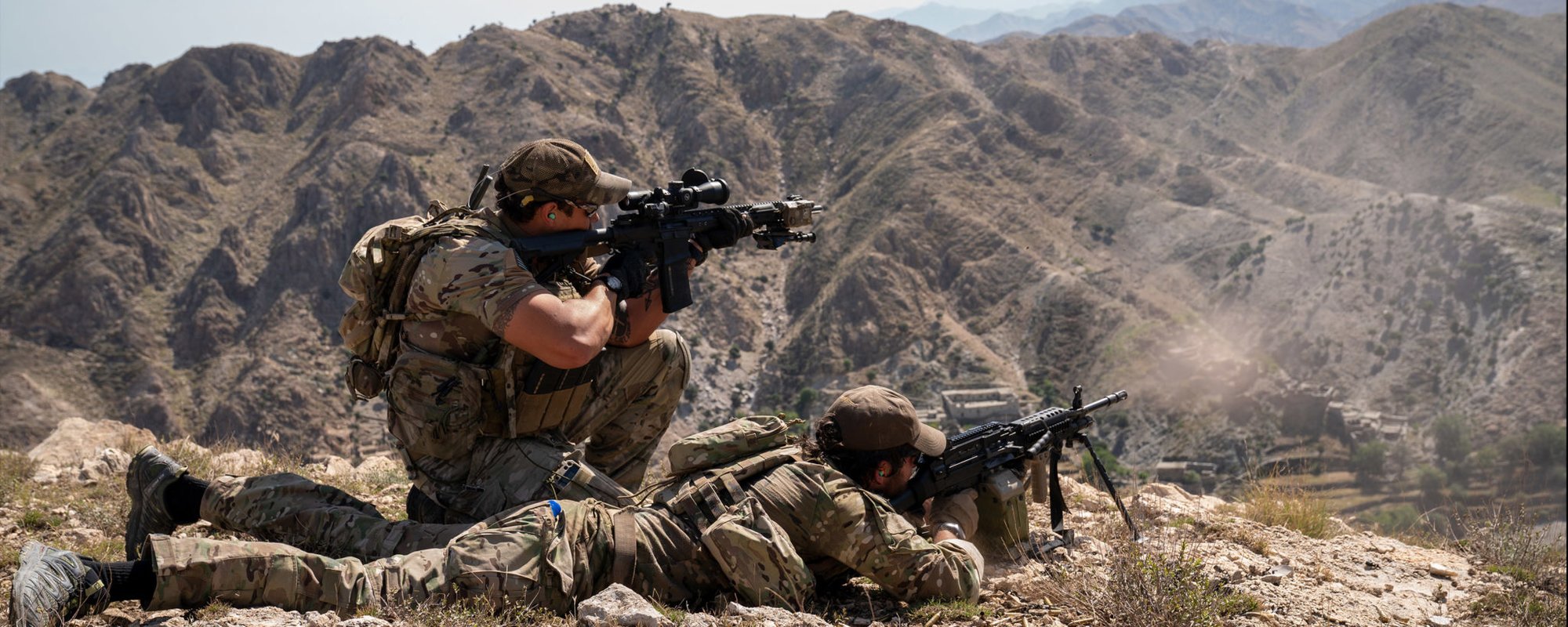Book Review: ‘Eagle Down: The Last Special Forces Fighting the Forever War’

In 2012 and 2013, I served on a Marine adviser team working with a border police unit in southern Helmand province. At the time, US forces were withdrawing from that region of the country. There was a feeling that no commander wanted to be the last one to have a casualty when the die had already been cast. The leash was always very tight, and the level of scrutiny was very high.
This was frustrating, even in a relatively quiet area of the country. Two years after my tour there, several Special Forces Operational Detachments Alpha (ODAs) supported Afghan units in Kunduz and Helmand and faced far greater challenges. The Taliban were resurgent, America’s troop levels had declined even further, and Afghan security forces were working on even more of a shoestring. Jessica Donati’s book Eagle Down is the story of these teams.

The mission confronting those Green Berets was daunting. Not only daunting, but confusing — they were charged with training Afghan troops but also with counterterrorism. The rules of engagement and support available depended on which of those missions they were performing at the time.
Airstrikes, for example, were supposed to be reserved to safeguard US troops in contact only, and those troops were supposed to be in contact only if ISIS was involved, not the Taliban. This was true even if the Afghan troops the teams supported were in contact.
Eagle Down shows the consequences of this approach to warfare at the team level. The book begins by spending time with each of the many players it will tell the story through, from an intelligence sergeant to a company commander to the commanding general. While occasionally jumping to Washington, DC, for perspective as to the overall state of the conflict, the book spends most of its time at the battalion level and below, especially with the individual A-teams.
The device allows the reader to become invested in what would otherwise be a staid account. Perhaps the greatest value of this is that it allows readers from different levels of the chain of command to see the conflict from the view of another. This is important in both directions.

The typical complaint is that higher-ups cannot visualize the effects of their decisions. Eagle Down shows several instances of this. For example, usually rules of engagement are contentious because of excessive positive identification (PID) or protection against collateral damage. What is less appreciated is that some rules of engagement are due to the restraints resulting from the limited mission.
This comes into play at several points in the book, most notably when the inability to use offensive airstrikes, imposed due to the limited US mission, caused an elaborate Afghan operation to reclaim territory near the Kajaki Dam to basically fall apart before it began. Just because there are no “combat operations” doesn’t mean there’s no combat.
On the flip side, the book offers varying degrees of sympathy for decision-makers all the way up the chain of the command from the teams, each of whom had their own challenges carrying out difficult missions in a complex environment with limited resources. Those who believe that “higher” is synonymous with “easier” would be well advised to read Eagle Down. From the company commander who inadvertently set a strike on a hospital in motion on up, the book does a solid job of depicting the burdens of command.
The vignette style of Eagle Down makes it not as much of a history of the drawdown in Afghanistan as it is a series of snapshots. Veterans of the war in Afghanistan of any period will remember the key terrain it takes place in. Unfortunately, most of these places were fought over and bled on multiple times — Kunduz, Kajaki Dam, Marjah.
For those who have been on the ground in Afghanistan since 2012, there is much that will seem familiar. I could see many of the same challenges my team endured, magnified a thousandfold. For those who were there in the beginning of the conflict, it may be a warning that the last days of a conflict can be just as dangerous as the first. For anyone, it should be telling that “leaving Afghanistan” has lasted almost a decade. There’s still plenty of room for a sequel.
Eagle Down: The Last Special Forces Fighting the Forever War by Jessica Donati, PublicAffairs, 320 pages, $28; available wherever books are sold on Jan. 19, 2021.

BRCC and Bad Moon Print Press team up for an exclusive, limited-edition T-shirt design!
BRCC partners with Team Room Design for an exclusive T-shirt release!
Thirty Seconds Out has partnered with BRCC for an exclusive shirt design invoking the God of Winter.
Lucas O'Hara of Grizzly Forge has teamed up with BRCC for a badass, exclusive Shirt Club T-shirt design featuring his most popular knife and tiomahawk.
Coffee or Die sits down with one of the graphic designers behind Black Rifle Coffee's signature look and vibe.
Biden will award the Medal of Honor to a Vietnam War Army helicopter pilot who risked his life to save a reconnaissance team from almost certain death.
Ever wonder how much Jack Mandaville would f*ck sh*t up if he went back in time? The American Revolution didn't even see him coming.
A nearly 200-year-old West Point time capsule that at first appeared to yield little more than dust contains hidden treasure, the US Military Academy said.












